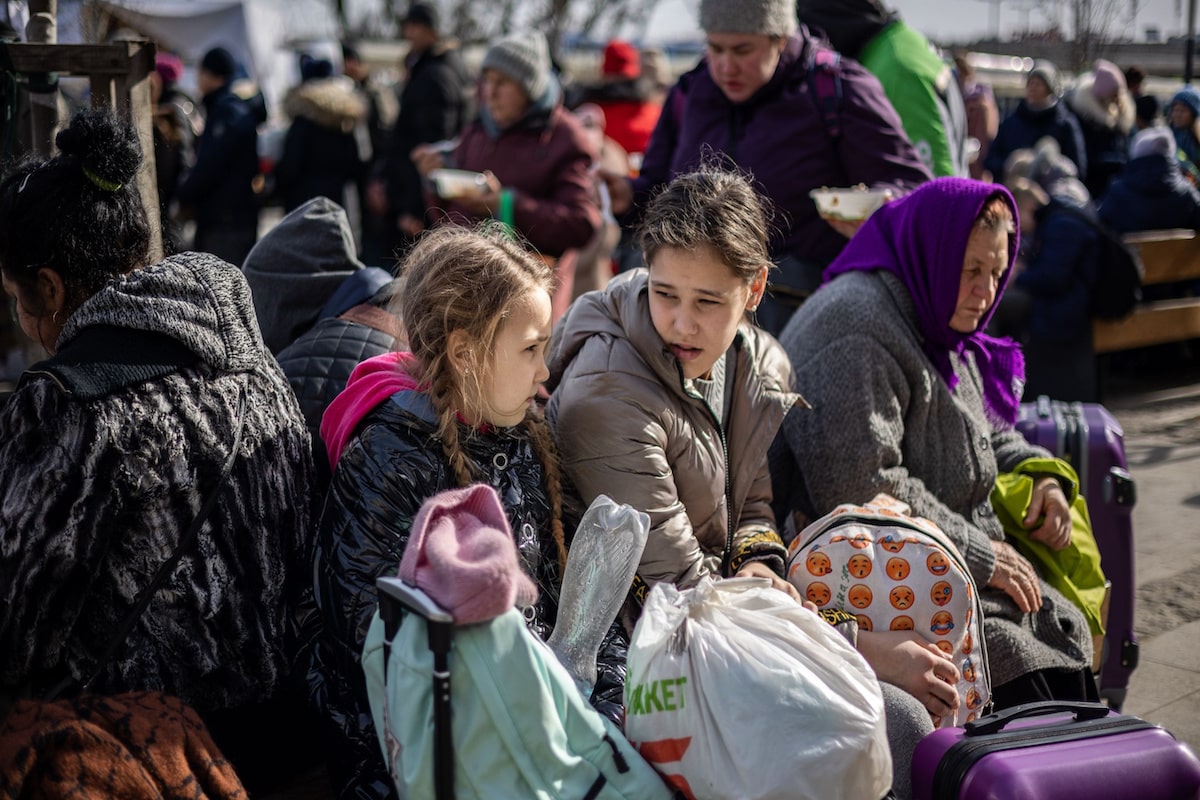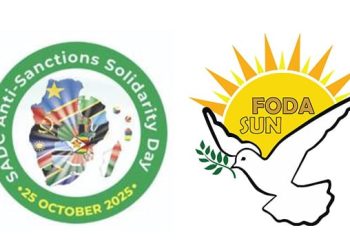The Ukraine crisis, recognized as one of the most significant geopolitical developments of the past decade, has had profound and multifaceted effects on the global order, regional security, and patterns of international cooperation. This conflict has not only transformed Europe’s energy landscape and trade routes but has also generated far-reaching consequences beyond the continent’s borders, particularly in West Asia, Central Asia, and the Caucasus.
In this context, Iran and the European Union – despite holding differing political positions regarding the crisis – emerge as two key actors on its periphery with considerable shared interests across various domains. These interests include energy security, regional stability, addressing the humanitarian impacts of the war, and combating climate change. The shifting configuration of power in the international system has highlighted the necessity of dialogue and cooperation among independent players more than ever.
In this regard, Iran’s latent capacities in sectors such as energy, transit, technical and engineering services, and emerging technologies can contribute to security and sustainable development in Europe – provided that efforts to build trust, reduce political tensions, and redefine frameworks for cooperation are earnestly pursued.
This report aims to examine the shared interests of Iran and the European Union in light of the developments arising from the Ukraine conflict. It identifies strategic areas of cooperation, existing obstacles, and actionable proposals to capitalize on these mutual opportunities. Ultimately, the report seeks to provide a realistic outlook on the future of Iran–Europe engagement within the framework of a transforming global order.
Energy Security and Diversification of Gas and Oil Sources
In the wake of the military escalation between Russia and Ukraine, the European Union has actively pursued policies aimed at reducing its dependency on Russian energy. This shift has significantly increased Europe’s demand for alternative energy sources, particularly from regions such as West Asia, Central Asia, and the Eastern Mediterranean.
The shared interests of Iran and the European Union in the realm of energy security can be articulated as follows:
- Iran, possessing the second-largest natural gas reserves and the fourth-largest proven oil reserves in the world, represents a potential energy supplier for Europe.
(EIA, 2025, https://www.eia.gov/international/analysis/country/irn) - The European Union, in pursuit of long-term energy security, is eager to diversify the geographic origins of its energy imports.
Given these mutual interests, the following strategic recommendations are proposed:
- Reviving negotiations on the Iran–Turkey–Europe gas pipeline within the framework of regional cooperation.
- Developing Iran’s LNG export capacity through joint investments with European partners – conditional upon sanctions relief or exemption mechanisms.
- Utilizing Iran’s existing infrastructure to facilitate the transit of Central Asian gas to Europe, thereby enhancing Iran’s role as a strategic energy corridor.
Addressing the Transboundary Consequences of War (Food Security, Migration, and Instability)
The war in Ukraine has led to significant disruptions in grain exports, an increase in forced migration, rising global inflation, and heightened food insecurity in various regions, including West Asia and North Africa. Europe remains acutely aware of the humanitarian implications of the conflict, and Iran can utilize its experience in humanitarian engagement to play a constructive role in this context, thereby opening avenues for renewed interaction and cooperation with the European Union.
Assistance in the distribution of medicine, fuel, and medical equipment to crisis-affected areas in Ukraine, as well as Iran’s potential role as a transit country for humanitarian aid from Central or West Asia to Ukraine, reflect the shared interests of both parties in this domain. Consequently, the establishment of a humanitarian corridor linking Iran, Central Asia, and Ukraine – with the support of the European Union and the involvement of Iranian non-governmental organizations in psychosocial rehabilitation, medical care, and educational programs for war-affected children – represents a key proposal in this regard.
Prolonged conflicts often create conditions conducive to the rise of extremist movements, arms trafficking, and terrorist organizations. The return of foreign fighters, particularly from conflict zones, poses a shared threat to the internal security of both Iran and Europe. To address this challenge, it is recommended that intelligence and security cooperation be enhanced within the framework of regional security dialogues involving Iran and European institutions. Furthermore, Iran’s support for disarmament and the rehabilitation of former combatants through international institutions is suggested as a constructive step toward achieving this objective.
Iran and the European Union share significant common interests in addressing the cross-border consequences of the war:
- Both Iran and Europe are adversely affected by instability in global markets for grain, fuel, and chemical fertilizers (Intereconomics, 2022, https://www.intereconomics.eu/contents/year/2022/number/3/article/the-war-in-ukraine-agricultural-trade-and-risks-to-global-food-security.html).
- Regional stability in Eastern Europe is essential for the internal security and economic well-being of both parties.
To capitalize on their shared interests in this area, Iran and the European Union can undertake the following actions:
- Collaborate in establishing alternative supply chains for grain and chemical fertilizers, particularly through agricultural partnerships between Iran and Eastern Europe.
- Facilitate Iran’s participation in the EU’s humanitarian aid programs to Ukraine, leveraging its logistical and regional capabilities.
- Develop cooperative channels to manage migration flows resulting from poverty or conflict, aiming to alleviate pressures on both regions and enhance regional stability.
Reconstruction of Ukraine and Technical Engineering Abilities of Iran
According to the World Bank, the cost of rebuilding Ukraine’s infrastructure and economy is estimated to exceed $400 billion (World Bank, 2025, https://www.worldbank.org/en/news/press-release/2025/02/25/updated-ukraine-recovery-and-reconstruction-needs-assessment-released). European countries are expected to play a leading role in financing this substantial effort.
Shared interests between Iran and the European Union in Ukraine’s reconstruction include:
- Europe seeks regional contractors with competitive costs to execute large-scale rebuilding projects (BEALE, 2025, https://beale-law.com/article/rebuilding-ukraine-construction-opportunities-on-the-horizon).
- Iranian companies, with proven expertise in dam construction, road building, power generation, water supply, and telecommunications, are well-positioned to contribute as cost-effective and skilled partners in these reconstruction initiatives.
The following proposals can be instrumental in achieving this objective:
- Designing a special mechanism to facilitate cooperation between Iran’s private sector and Ukrainian reconstruction agencies through third-party countries such as Turkey, Armenia, or Kazakhstan.
- Offering tailored packages for the export of Iranian technical and engineering services in secure zones of Ukraine, aligned with the country’s reconstruction priorities.
- Leveraging the capabilities of Iranian technical universities to train skilled professionals for joint reconstruction projects, thereby contributing both expertise and human capital to Ukraine’s rebuilding process.
Countering Global Bloc Formation and Intensified Polarization
Europe seeks to strengthen a stable multilateral order; however, the war in Ukraine has accelerated a process of global polarization between the West and the East – specifically Russia, China, and increasingly, Iran (University of Cambridge, 2023, https://www.cam.ac.uk/stories/worlddivided). Under the pressure of Western sanctions, Iran has increasingly aligned itself with Eastern powers.
Shared interests between Iran and the European Union in this context include:
- Europe aims to maintain effective engagement with independent regional actors like Iran to prevent the region from succumbing entirely to the influence of China and Russia.
- Iran seeks balance in its international relations and aims to avoid total isolation by diversifying its partnerships.
Operational proposals in this regard include:
- Facilitating Iran–EU regional dialogues on issues such as energy security, migration, and regional stability.
- Encouraging Iran’s active participation in multilateral meetings concerning Ukraine’s future, such as the Geneva Peace Conference or humanitarian initiatives.
Technological Cooperation in Renewable Energy and Climate Change
The conflict in Ukraine has expedited Europe’s transition to renewable energy and the reduction of dependence on fossil fuels (European Commission, 2025, https://commission.europa.eu/topics/energy/repowereu_en). Similarly, Iran is pursuing advancements in these sectors.
Shared interests between Iran and the European Union encompass:
- Collaboration in solar, wind, and energy storage technologies.
- Exchange of knowledge in water resource management, sustainable agriculture, and drought mitigation.
The following proposals are recommended to further this agenda:
- Establishment of a joint Iran–EU working group focused on environmental issues and renewable energy.
- Attraction of European investments in solar power plant projects in Iran’s central and desert regions.
- Facilitation of knowledge transfer regarding the application of artificial intelligence in sustainable agriculture and the efficient utilization of natural resources.
Participation in Peace Diplomacy and Active Mediation
The Islamic Republic of Iran and the European Union both aspire to end the conflict and restore international order. Given Iran’s relationships with Russia and several non-Western actors, alongside the EU’s role as a key supporter of Ukraine, both parties can play complementary roles in developing viable exit strategies from the crisis (Journal of Iran and Central Eurasia Studies, 2024, https://jices.ut.ac.ir/article_98755_a928a64c2c56a4b769a65a1e492d648b.pdf).
The following proposals outline practical avenues for engagement in peace diplomacy:
- Iran’s participation in multilateral peace talks, such as attending the Geneva or Istanbul summits.
- Proposing mechanisms for a “regional security dialogue” involving Iran, Russia, Ukraine, and the European Union, aimed at de-escalation and long-term stabilization.
Expanding Public and Cultural Diplomacy to Bridge Perceptual Divides
The conflict in Ukraine has significantly deepened cultural and perceptual gaps between the East and the West (Carnegie Endowment for International Peace, 2024, https://carnegieendowment.org/research/2024/05/inevitable-fractures-the-ukraine-war-and-the-global-system?lang=en). Iran and the European Union can leverage cultural, academic, and media diplomacy as tools to promote shared, peace-oriented narratives.
By engaging in initiatives that foster mutual understanding and reduce stereotypes, both parties can contribute to building a more inclusive and cooperative international environment grounded in dialogue, trust, and shared human values.
Establishing scientific and academic exchange programs for the joint analysis of crises and the enhancement of interdisciplinary capacities in the fields of peace and development, along with the participation of Iranian media in projects aimed at countering misinformation and extremist narratives, are among the proposals that can help achieve this objective.
Conclusion
A review of the developments stemming from the Ukraine war indicates that, although the conflict appears to be limited to Europe on the surface, its geopolitical, humanitarian, economic, and environmental dimensions have extended far beyond. In this complex context, Iran and the European Union face not only common threats but also new opportunities for
cooperation.
From securing Europe’s energy supply through Iran to Tehran’s involvement in the reconstruction of Ukraine; from addressing the humanitarian consequences of the war and extremism to the development of green technologies and cultural and academic collaborations – these areas all hold the potential to serve as new platforms for interaction and trust-building between the two parties.
However, achieving these goals requires several fundamental conditions: first, managing political differences within the framework of responsible and gradual diplomacy; second, avoiding excessive polarization in the global order and utilizing the capacities of independent countries for mediation and bridging; and third, establishing flexible and operational mechanisms for cooperation in areas less affected by sanctions and geopolitical sensitivities.
Thus, while the Ukraine crisis constitutes a serious threat to the international order, it has also presented a rare opportunity for regional actors such as Iran to redefine their position in global dynamics through a cooperative approach, allowing them to play a constructive role in crisis management and future reconstruction. This path will benefit not only Iran and Europe but also contribute to global peace and sustainable development. Therefore, the time has come for Iran and Europe to move beyond purely defensive stances and, by focusing on shared interests, take practical and forward-looking steps toward cooperation within the new global order following the Ukraine war.
Establishing regional diplomacy based on shared interests, activating the capacities of the private, technical, and humanitarian sectors in collaboration with Europe, and designing a strategic foreign policy that balances relations between East and West while maintaining independence and high engagement are proposals that can significantly contribute to realizing the common interests of Iran and the European Union, particularly regarding Ukraine. Although this path is challenging, it will aid in restoring Iran’s constructive role in future global dynamics.
Resources
- EIA (2025), Iran’s energy overview, Accessible at: https://www.eia.gov/international/analysis/country/irn
- Intereconomics (2022), The War in Ukraine, Agricultural Trade and Risks to Global Food Security, Accessible at: https://www.intereconomics.eu/contents/year/2022/number/3/article/the-war-in-ukraine-agricultural-trade-and-risks-to-global-food-security.html
- Worldbank (2025), Updated Ukraine Recovery and Reconstruction Needs Assessment Released, Accessible at: https://www.worldbank.org/en/news/press-release/2025/02/25/updated-ukraine-recovery-and-reconstruction-needs-assessment-released
- BEALE (2025), Rebuilding Ukraine – construction opportunities on the horizon, Accessible at: https://beale-law.com/article/rebuilding-ukraine-construction-opportunities-on-the-horizon
- University of Cambridge (2023), War in Ukraine has widened a global divide in public attitudes toward US, China and Russia, Accessible at: https://www.cam.ac.uk/stories/worlddivided
- European Commission (2025), Affordable, secure and sustainable energy for Europe, Accessible at: https://commission.europa.eu/topics/energy/repowereu_en
- Carnegie Endowment for International Peace (2024), Inevitable Fractures: The Ukraine War and the Global System, Accessible at: https://carnegieendowment.org/research/2024/05/inevitable-fractures-the-ukraine-war-and-the-global-system?lang=en
- Journal of Iran and Central Eurasia Studies (2024), Ukraine Crisis and Iran’s Balancing Regional Role in International Competitions, Accessible at: https://jices.ut.ac.ir/article_98755_a928a64c2c56a4b769a65a1e492d648b.pdf





